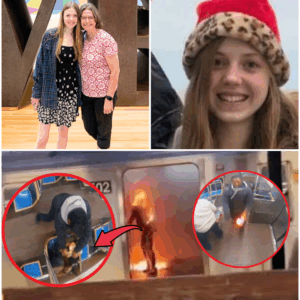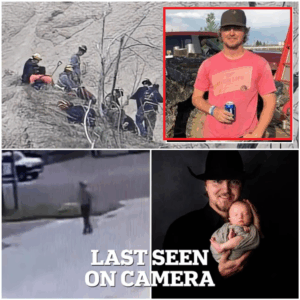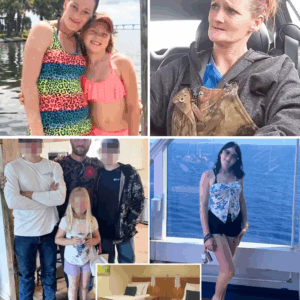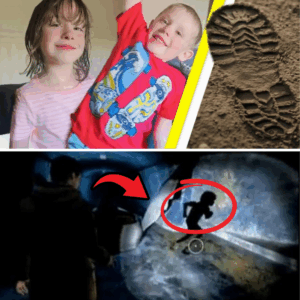In the vast, unforgiving expanse of South Australia’s outback, a parent’s worst nightmare unfolded on September 27, 2025, when four-year-old August “Gus” Lamont vanished without a trace from his family’s remote sheep station. What began as a routine afternoon of play near the homestead has spiraled into a week-long saga of exhaustive searches, fading hopes, and now, a backlash against heartless online trolls peddling baseless conspiracy theories. Family friend Fleur Tiver has publicly slammed these “despicable” claims, urging the public to stop speculating and allow the grieving family some semblance of peace amid their unimaginable loss.
Gus, a shy yet adventurous child with long blond curly hair and an angelic face, was last seen around 5 p.m. playing in a mound of dirt outside his grandparents’ homestead at Oak Park Station, approximately 40 kilometers south of the tiny town of Yunta. The property spans a staggering 6,000 hectares—equivalent to 60 square kilometers—of rugged bushland, featuring arid scrub, hidden crevices, dry creek beds, and treacherous terrain that poses immense challenges for search efforts. Yunta itself is a dusty outpost with just 60 residents, located about 300 kilometers northeast of Adelaide, underscoring the isolation of the area where Gus disappeared.
According to family accounts relayed through police, Gus was under the watchful eye of his grandmother when he stepped away to play in the sand. By 5:30 p.m., a quick call inside revealed he was gone, prompting immediate panic and the launch of a frantic search by relatives. Described as a “good walker” who had never ventured far from the property before, Gus was wearing a grey broad-brimmed sun hat, a cobalt blue long-sleeved T-shirt featuring a yellow Minions character from the Despicable Me franchise, light grey pants, and boots—clothing ill-suited for prolonged exposure to the outback’s harsh elements. South Australia Police (SAPOL) quickly classified the disappearance as non-suspicious, theorizing that the young boy had simply wandered off into the bush, a common yet perilous occurrence in such remote rural settings.
The initial response was swift and overwhelming. Family members scoured the immediate vicinity, but as night fell and no sign of Gus emerged, SAPOL was notified. By Sunday morning, the search escalated, involving local volunteers, State Emergency Service (SES) teams, and specialized police units. The terrain’s complexity—winding sandy tracks, potential animal burrows, and hidden dips—made every step a potential oversight, as noted by SA Police Commissioner Grant Stevens, who described the area as “challenging” with “lots of places a small child might find themselves which would be hard for us to identify.” Early efforts included ground teams combing a three-kilometer radius, water police divers searching nearby dams and tanks for any tragic falls, and mounted officers navigating the scrubland.
As days passed without clues, the operation grew in scale. On Tuesday, a solitary child’s footprint—matching the boot pattern Gus wore—was discovered about 500 meters from the homestead, near a road, offering a glimmer of hope and redirecting searchers’ focus. Yorke Mid North Superintendent Mark Syrus called it a “pretty significant find,” though he cautioned it might predate the disappearance, possibly left days earlier. A specialist tracker was deployed to follow any potential trail, while 40 police cadets bolstered the ground teams.
By Thursday, October 2, the Australian Defence Force (ADF) joined with nearly 50 personnel, marking a rare inter-agency collaboration for a missing child case. Helicopters provided aerial surveillance over nearly 500 square kilometers, but no further traces—such as clothing, a hat, or additional footprints—surfaced. Survival experts weighed in, noting the improbability of a four-year-old enduring days without food, water, or shelter in freezing overnight temperatures and daytime highs reaching 30°C (86°F). Alone Australia contestant Michael Atkinson offered cautious optimism, suggesting Gus might have sought shelter in a crevice or under bush cover, but police shifted to a “recovery phase” by mid-week, preparing the family for the grim reality.
On Friday, October 3, after seven intensive days—one of the largest missing persons operations in South Australian history—Assistant Commissioner Ian Parrott announced the scaling back of active searches, handing the case to the Missing Persons Investigation Section for long-term inquiries. “At this point, no trace of Gus has been located,” Parrott stated, emphasizing that medical experts deemed survival unlikely after 100+ hours in such conditions. Police returned to the property on October 4 to re-trace movements and document evidence, but the focus remained on recovery rather than rescue.
Throughout the ordeal, Gus’s family remained largely private, releasing a heartfelt statement via spokesperson Bill Harbison: “We are devastated by the disappearance of our beloved Gus… Gus’s absence is felt in all of us, and we miss him more than words can express. Our hearts are aching, and we are holding onto hope that he will be found and returned to us safely.” They expressed gratitude for the community’s support but requested media refrain from direct contact, highlighting their deep distress. On Thursday, they broke their silence visually by allowing SAPOL to release the first photo of Gus, depicting the curly-haired boy in a Peppa Pig T-shirt, playing with Play-Doh—a poignant reminder of his innocence.
Yet, amid this tragedy, a darker element emerged: online conspiracy theories accusing the family of foul play, including claims of abduction cover-ups or deliberate harm. These baseless speculations proliferated on social media, with “keyboard detectives” filling informational voids with implausible narratives, such as Gus being taken via the remote Barrier Highway— a 1,000 km stretch rarely traversed except by truckers—and picked up by strangers. Police dismissed third-party involvement as “highly unlikely,” citing the property’s isolation, gated access roads, and lack of evidence for abduction.
Fleur Tiver, a 66-year-old family friend whose ancestors have neighbored the Lamonts since the late 1800s, returned from the Adelaide Hills to aid the search and vehemently condemned the trolls. “Stop with the conspiracy theories. This child has not been taken,” she declared, emphasizing the six gates blocking easy access to the highway and the tight-knit community’s unwavering support. “The family would not have harmed this child even if the world was about to come to an end, which it really has now for them,” Tiver told the Adelaide Advertiser, calling the theories “unfortunate” and “implausible” amid unanswered questions. Assistant Commissioner Parrott echoed this, labeling online speculation “not welcome” and “hurtful,” as it compounded the family’s trauma.
The backlash highlights a broader issue in high-profile missing child cases: the rapid spread of misinformation in the digital age. Police urged the public to provide only “actual information” via hotlines, which were inundated with opinions rather than leads post-photo release. Community spirit shone through, with locals like Royce Player, a former neighbor, joining searches and noting how a small child could evade detection even in spaced-out lines. Volunteers averaged 30 SES members daily, praised for their “unwavering commitment.”
As the investigation continues under the Missing Persons Unit, the focus shifts to forensic reviews and potential animal involvement theories, though wandering remains primary. Locals speculate on hidden dangers like sinkholes or dingo attacks, but experts stress the outback’s deceptive vastness. Gus’s case parallels other rural disappearances, underscoring risks for children in isolated areas.
The community’s outpouring of sympathy contrasts sharply with the online vitriol, with Parrott noting the “traumatic” impact on the family: “Life is not supposed to work where a parent loses a child.” As searches wind down, the hope for closure lingers, but the despicable theories serve as a stark reminder of empathy’s importance in tragedy. Tiver’s plea resonates: speculation only deepens wounds without aiding truth. For now, the outback holds its secrets, leaving a nation heartbroken over little Gus.





